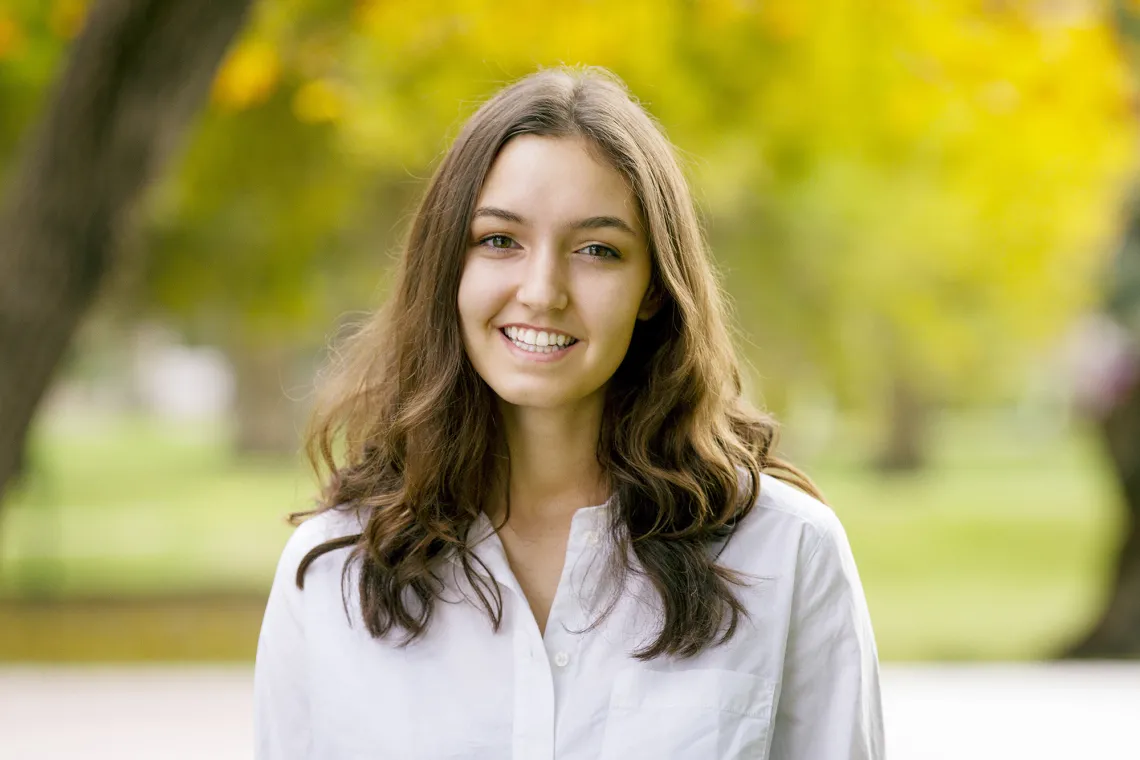Counting Rocks and Calculating Risks
UA undergrad works to ID OSIRIS-REx touchdown site

University of Arizona senior Keara Burke spent her first summer as a college student studying abroad with the Honors College, visiting eight countries in two months.
“I’ve never felt more connected to what it means to be human,” Burke says. “The entire trip was focused on human identity.”
Now, she has expanded her exploration of humanity well beyond Europe’s borders — indeed, beyond Earth’s atmosphere. She is an image processing intern on the UA-led OSIRIS-REx NASA mission. The systems engineering and mathematics double major started interning with the OSIRIS-REx team during her sophomore year.
Burke’s task is to help identify the safest place on Bennu — one that isn’t too rocky — for the spacecraft to collect a sample with its Touch-and-Go Sample Acquisition Mechanism. The TAGSAM arm is expected to touch Bennu’s surface for only five seconds, and doing so in an area with lots of rocks could compromise the mission.
The TAGSAM will collect rocks only up to about three-quarters of an inch (2 centimeters) in diameter. Rocks larger than 21 centimeters can block the entire collection head, Burke explains, and rocks taller than 5 centimeters can cause the TAGSAM to tilt, affecting how much the chamber can collect.
“We have to be able to track all these hazards,” says Burke, whose job involves counting the number of rocks in the images of Bennu that OSIRIS-REx sends back to Earth every day.
Using a combination of software and statistical analysis to determine the quantity, relative size and distribution of rocks on the asteroid, the image processing team hopes to identify the best possible sample site for OSIRIS-REx.
“The first part of our imaging campaign will involve establishing the global distribution of rocks on the asteroid,” Burke says. “Then we’ll zoom in on the areas that seem safe, image those and pick a site that seems the safest for the TAGSAM to make contact.”
Exceeding Expectations
Burke started her internship counting rocks in images of a simulated asteroid surface with a particle distribution similar to what the team expects to see on Bennu, and she offered to analyze the data when she finished.
It was a big task for an undergraduate, but the mission’s lead image processing scientist, Daniella DellaGiustina, agreed to let her try. Within weeks, Burke had installed a matrix laboratory library onto the mission’s computers, giving the team better data analysis capabilities than ever before.
The American Geophysical Union selected Burke to present at its December meeting, which is the largest Earth and space science conference in the world.
“It is rare to work with an undergraduate who is brilliant enough to lead Ph.D.-level research,” DellaGiustina says. “I am continually impressed with her adeptness in both technical and professional matters.”
Burke, the vice president of the Engineering Student Council, an Engineering Ambassador and a member of several honor societies, likes going down what she calls different “rabbit holes” of information. In her work on OSIRIS-REx, she’s learned about everything from photogrammetry to 3D modeling to presenting research. The information she’s gathered will come in handy in the coming months as she helps lead the analysis of the distribution of rocks across Bennu’s surface.
“It’s really nice to work in such a good, smart group of people,” Burke says. “Being included in the conversations is kind of unreal. It took a while for me to really be able to believe, ‘Wow, I’m on a NASA mission.’”
